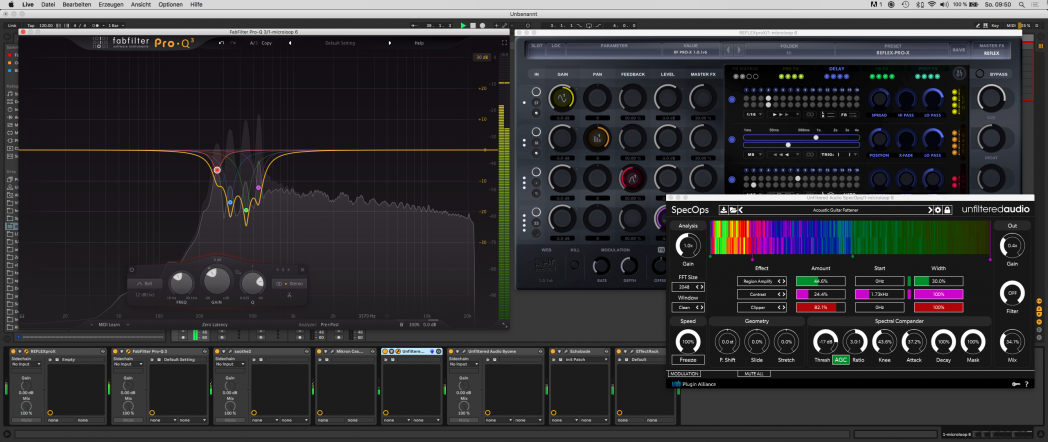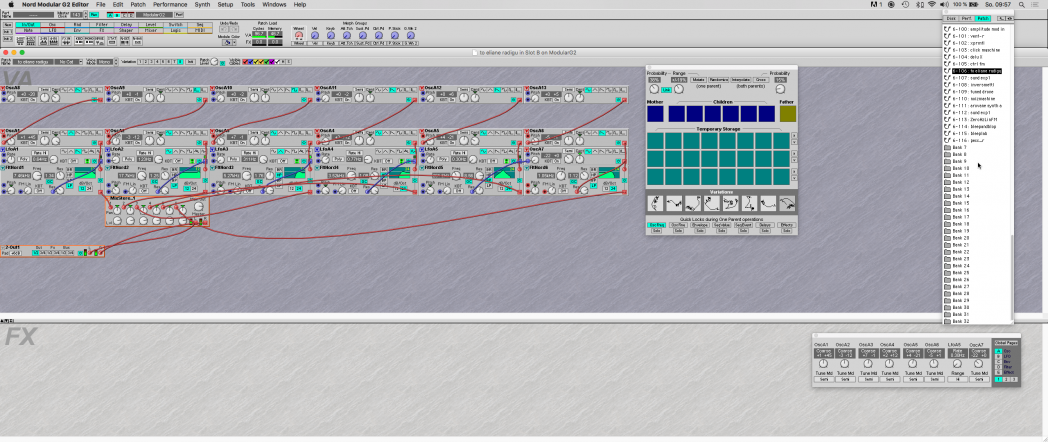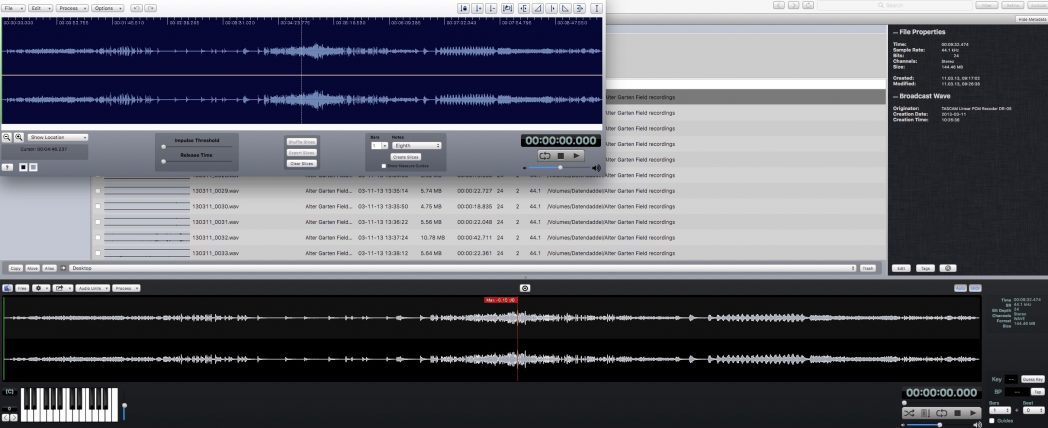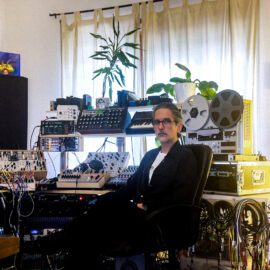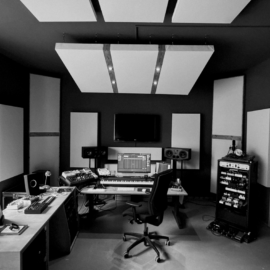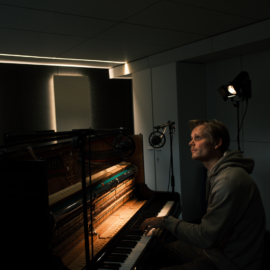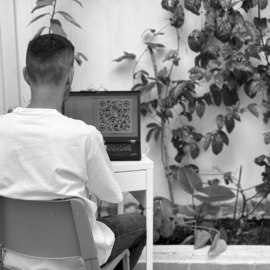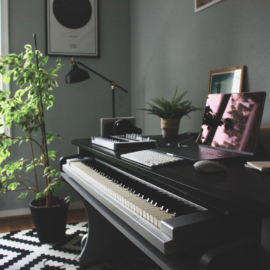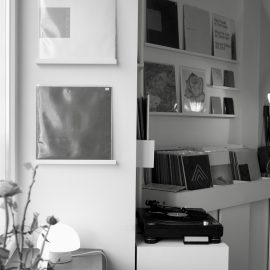Hi Uwe, how are you doing during the lock-up? Spending a lot of time in the studio, I hope?
I am doing well in these crazy times, locked myself up in my studio… No, that was a joke. I spend a lot of time in my studio, yes. I am happy to work from home. I quit all my live gigs to spend my time with work on different sound design jobs. My daily routine is to start my work after I’ve slept-in and had an excellent breakfast. Then I switch on the machines, sip an excellent coffee, and put all of my focus on the sound design until lunch. After a lunch break, I continue my work until 6 – 7 p.m.
We last spoke in May fo 2014. Can you tell us how your studio has evolved since then?
Yes, a long time ago, 2014! A lot has happened and changed since then. I moved to my new house near the river Saale. The next town, Halle, is 30 km from here. I built my workspace under the rooftop. My instruments are placed on wooden desks in a u-shape around me so that I can reach everything directly. Not much has been added regarding hardware instruments since 2014. I’ve bought a Novation Peak desktop synthesizer, a stompbox from Hologram called Infinite Jets, which I love very much, a pair of Genelec monitors, and a Roli Seaboard RISE 49. I’ve also ordered an Osmose keyboard/ synthesizer from Expressive E. There was much more growth on the software side. I’ve bought a lot of plugins that are important to my sound design work: spectral analysis tools, compressors, filters & EQ’s, reverbs, delays, instruments based on granular synthesis, resynthesis tools, synthesizers…
You also wanted to get your hands on the Kyma system (which became the Pacarana). Did that ever happen?
No. I thought about it, yes, after I sold my Capybara 360 system, but O decided to spend my money on software and a computer system. With the latest version of Kyma 7.1 and the Pacarana, you can do a lot, I know. There’s a new wave editor, a multigrid for sound design, and much more. Maybe, when I sit in a room full of platinum disks, I will buy this system. Currently, I work with specific software to design my sound ideas. It is like a giant modular system for me, inside the DAW.
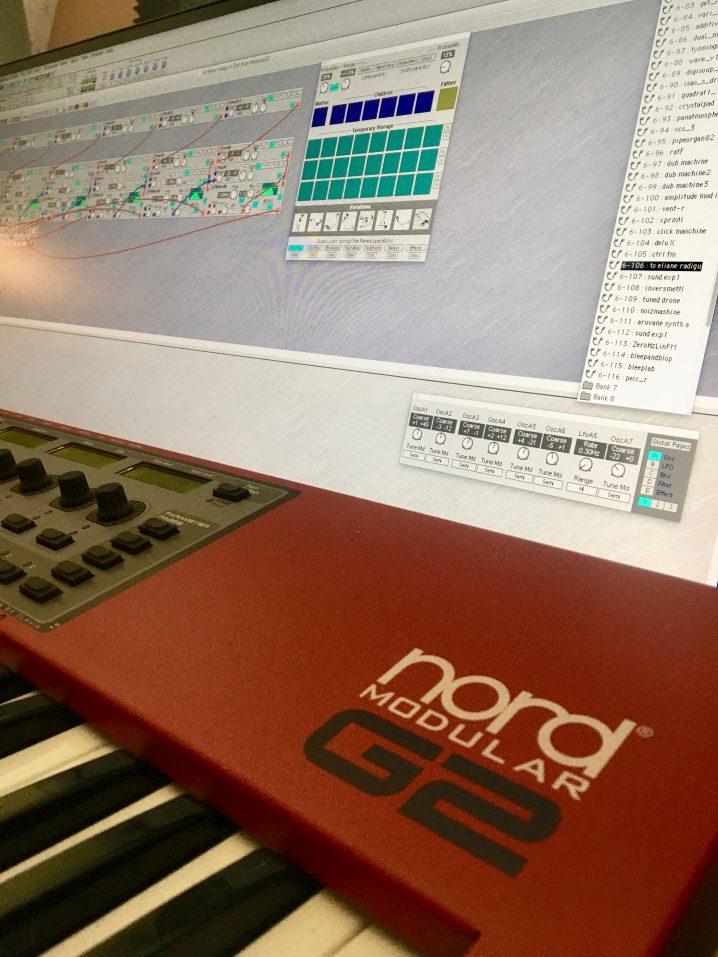
I know that you’re more into sound design with digital synthesizers versus the modular Eurorack. Can you talk a little about s preference?
A modular rack is a fine thing, but I have to spend a lot of money to implement my needs and ideas. I consciously rely on software. It is much more flexible in use, and parameters are storable. I can add just as many “module” instances as I need. Oh, and what about all the funny knobs and sliders, you’ll say. Yes, I have that with dedicated hardware controllers. But the analog vibe, you’ll say, well, analog is fine for doing… analog things. I know people who use mainly analog gear for mastering, that’s fine. But what can I do when I need an EQ with 96 dB flank steepness or a brickwall EQ? With digital equipment, I can do this with digital precision. I don’t care about that “analog vs. digital” discussion. I use the most effective tools that I need for my work.
Tell us about the sound design work that you do for Native Instruments, others, and your very own sound shop?
Yes, from time to time, I work for Native Instruments. I was involved with the preset and sample design for the Kontakt instruments, Straylight and Pharlight. Both wonderful instruments developed by Frank Elting, a friend of mine. Currently, I am working on a new project by Ableton and a new synthesizer from a French company, which I can’t talk about 🙂 if you know what I mean.
There are other, smaller companies I’ve worked for. Soundmorph and Twisted Tools, for example. You’ll find a Cinematic Soundbank in the C15, the synthesizer from Nonlinear Labs. I know Stephan Schmitt for a couple of years and followed the development of the instrument and his company. The C15 is an outstanding synthesizer. The build quality and the keyboard is top-notch. The sound generation is based on the Kontour synthesizer from Native Instruments, also developed by Stephan Schmitt.
Well, and I launched my own arovane-soundshop.com this year, with a steadily growing range of presets for different software synthesizers. I am planning to release sample packs and presets for effects in the future.

Before I worked as a sound designer, the creation of sounds was an important part of my work as a composer and a musician. I created sounds and presets for my own use. Now my view of the creation and the use of sounds have changed. As a sound designer, you always have to keep an eye on these developments. Regarding the presets, I try to find the right balance between the ease of use, uniqueness, and creative freedom for the customers. Also, a lot of aspects have to be included because of technical developments. I am thinking of MPE (Midi Polyphonic Expression) or MPE+. A growing number of developers of the software include new technology in the design of their instruments. This must then be taken into account when programming sounds. Other instruments or synthesizers are closely linked to a particular controller architecture or are an integral part of a platform like Kontakt, from Native Instruments, for example.
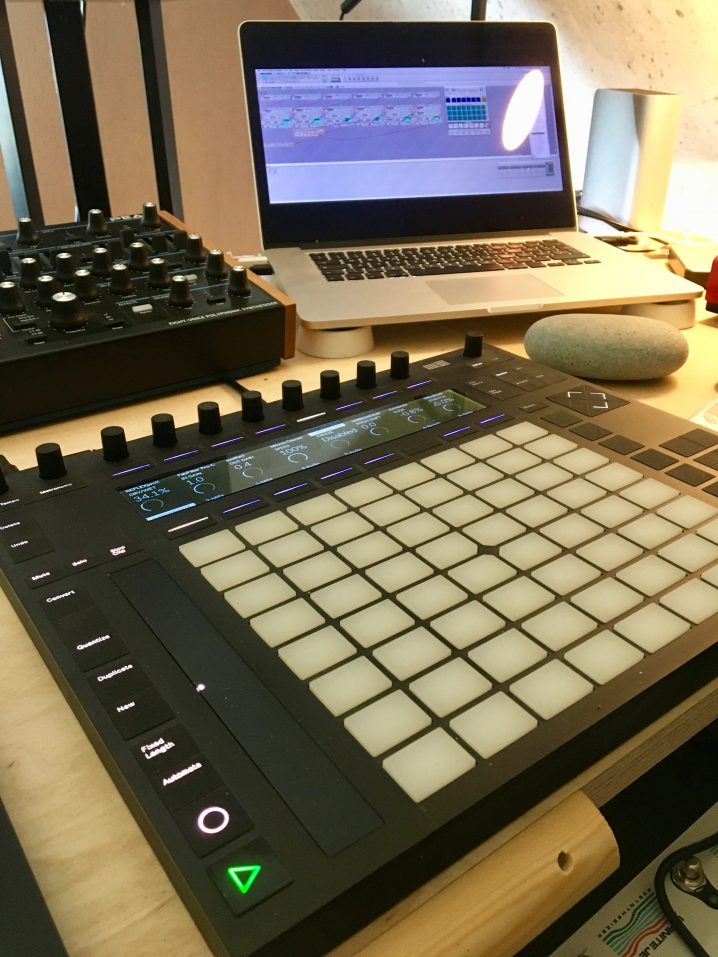
How do you approach the work on a new sound? Do you have a particular workflow that you follow?
It depends on various aspects and the customer’s specifications related to sound design orders. There are assignments where I have total freedom to create something interesting. Mostly there are specific needs/ orders to develop presets for a new synthesizer or a sampling instrument.
My personal approach to work with a sound is different. Usually, I start with a sample that is interesting to me. I listen very attentively and focus on the characteristics. I ask myself: is there a specific frequency? Interesting overtones, a texture? Is it repetitive? Where is that sound from? Is it synthesized or from a field recording? I start with some basic operations, like pitching the sample up and down. Some samples have a kind of a sweet spot where they sound interesting.
Some days I just listen to a whole lot of samples. I use specific software, Audio Finder from Iced Audio, to organize, catalog, and edit all my samples. Is there enough attractiveness to a sample, then I copy the file into the DAW for further sound design and to save variations of it.
As for the presets for synthesizers, it is different. It sounds a bit strange, but I think in the parameter structures of a synthesizer. Yes, I can hear the new sounds in my head, I can think them. You might think that has to be pretty loud at times… well, it is more of an abstraction of sounds I am thinking, based on a particular parameter link or a specific sound production. That is why some synthesizers are more interesting for me than others.
My workflow is to start from scratch, with a sine or a saw wave. Press init. That is the best way to learn the architecture of a synthesizer. My approach is open. Tonally, I think in all directions. For the presets you can buy in my shop, I set myself a subject, “pulses, “for example or rhythmic BPM based presets.
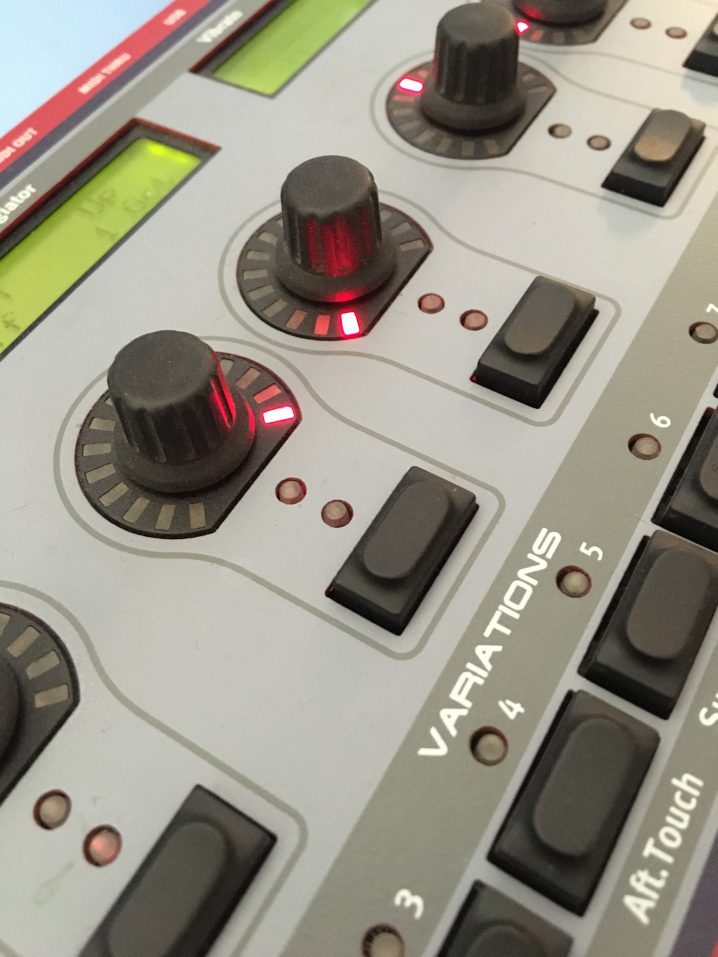
Are there any new and exciting synthesis techniques that you’ve learned and explored lately?
There is a really interesting resynthesis section beneath the granular part in the new Padshop 2 synth from Steinberg, which I used a lot the last time. I experiment with very narrow bands in EQ’s to notch out specific frequencies of a sound. With slow, dynamic automation of those frequencies and a huge and dense reverb processor at the end of the signal chain, you’ll get amazing spectral clouds. I really love resonating sounds. I use Native Instrument’s Prism, developed by Stephan Schmitt, a lot for sound design.
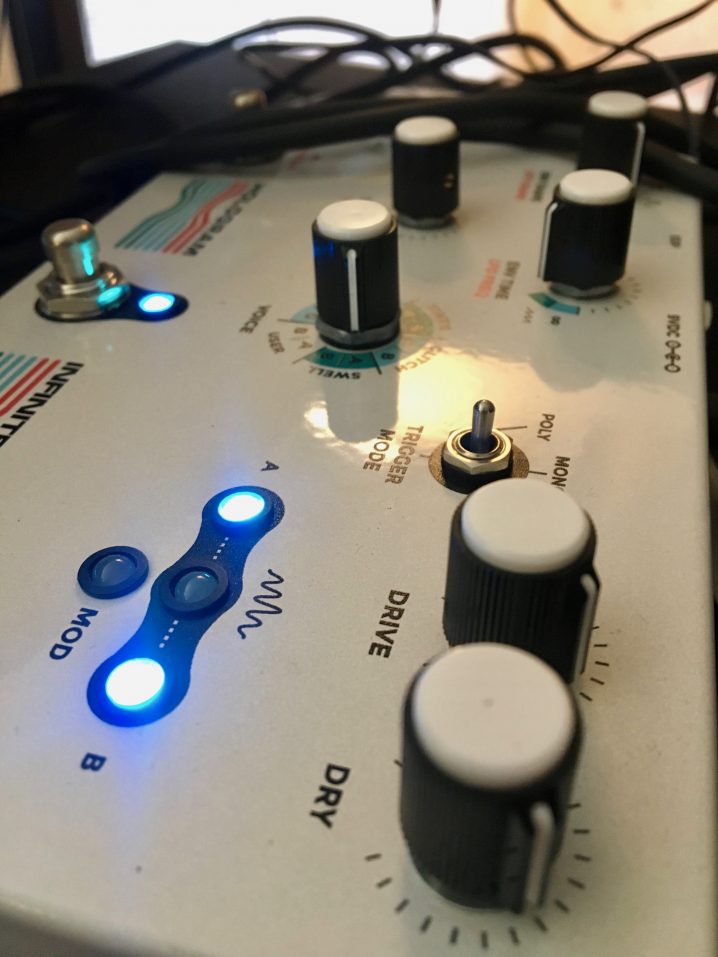
What’s currently out there that excites you, in terms of sound design, and something that you want to get a little deeper into?
I am waiting eagerly for the new Osmose keyboard from Expressive E, which I’m expecting at the end of 2020! This is a totally new approach to play a keyboard and to perform a sound. Don’t think of tweaking an envelope or turn a knob for a vibrato. Just play that envelope with the keyboard or blend in a noisy, resonant pad after you touched a key and modulate that further with another gesture. The magic behind all that is the built-in EaganMatrix, known from the Haken Audio. A very deep and complex synthesizer that is made to be played with the MPE+/ A.K.A technology.
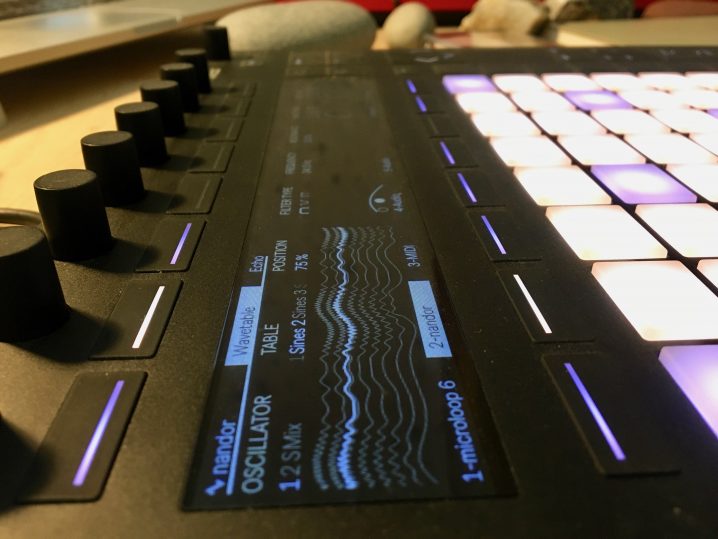
What advice would you give to someone just starting out with sound design and synthesis?
Follow your own ideas and develop your own style. Start with a simple idea and pursue it further. Learn from other musicians and sound designers, listen very carefully to all kinds of music, read books about music philosophy and techniques, learn the history of electronic music, stay curious, learn to be amazed, and use your enthusiasm to research. Listen, listen, and listen again.
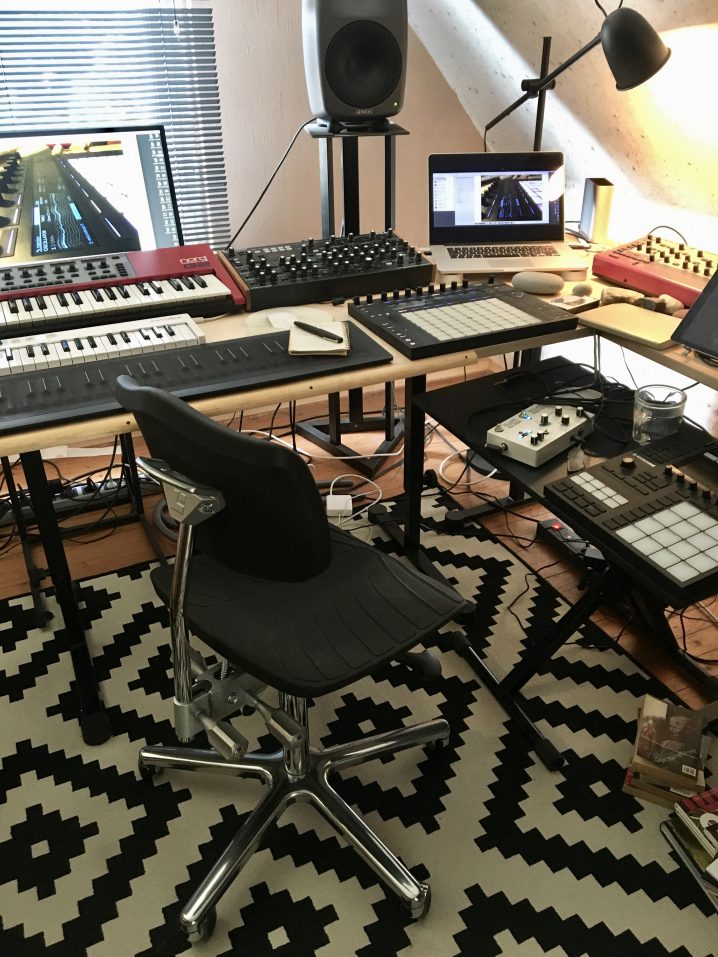
What are you currently working on, and what’s next for Arovane?
Beside my sound design jobs, I am currently working on a new album, a cassette release for Puremagnetik. Well, it is nearly finished. A new preset bank is in the pipeline to be released on my arovane-soundshop.com, and you can expect some more exciting Arovane sound design products this year for different companies.
